Share
Explore
Android Layout Worksheet: Mastering activity_main.xml Design
Objective: Teach students a template-driven, pattern-based methodology for designing, troubleshooting, and structuring Android layout XML files, particularly activity_main.xml.
📌 Why Follow a Pattern-Driven Layout Design?
Most students copy-paste XML without understanding why it works. The Android MOJO approach helps break down layout design into repeatable patterns, ensuring:
✅ Modularity – Layouts are reusable and scalable.
✅ Consistency – Standardized structures improve efficiency.
✅ Troubleshooting Readiness – Debugging becomes structured, not trial-and-error.
📌 Part 1: The MOJO Layout Framework
🛠 Step 1: Android Layout Checklist
Before writing any layout XML, ask yourself:
✔ Which UI container is best? → LinearLayout, ConstraintLayout, FrameLayout?
✔ What alignment do components need? → Horizontal, Vertical, Relative?
✔ Are margins and padding standardized?
✔ Are text sizes, colors, and dimensions in res/values/?
📌 Part 2: Layout XML Pattern (MOJO Standard Template)
Use this template to structure any Android layout file effectively.
🛠 Template: activity_main.xml (Standard MOJO Layout)
<?xml version="1.0" encoding="utf-8"?>
<LinearLayout xmlns:android="http://schemas.android.com/apk/res/android"
android:layout_width="match_parent"
android:layout_height="match_parent"
android:padding="16dp"
android:orientation="vertical">
<!-- Header Section -->
<TextView
android:id="@+id/headerText"
android:layout_width="match_parent"
android:layout_height="wrap_content"
android:text="@string/header_title"
android:textSize="24sp"
android:textStyle="bold"
android:gravity="center"
android:layout_marginBottom="16dp"/>
<!-- Input Fields -->
<EditText
android:id="@+id/usernameEditText"
android:layout_width="match_parent"
android:layout_height="wrap_content"
android:hint="@string/enter_username"
android:inputType="textPersonName"
android:layout_marginBottom="8dp" />
<EditText
android:id="@+id/emailEditText"
android:layout_width="match_parent"
android:layout_height="wrap_content"
android:hint="@string/enter_email"
android:inputType="textEmailAddress"
android:layout_marginBottom="16dp" />
<!-- Action Buttons -->
<Button
android:id="@+id/submitButton"
android:layout_width="match_parent"
android:layout_height="wrap_content"
android:text="@string/submit_button"
android:layout_marginTop="8dp" />
<Button
android:id="@+id/cancelButton"
android:layout_width="match_parent"
android:layout_height="wrap_content"
android:text="@string/cancel_button"
android:layout_marginTop="8dp" />
</LinearLayout>
📌 Part 3: Understanding the Template
This layout follows MOJO design principles:
1️⃣ Container Choice (LinearLayout)
2️⃣ Padding & Margins
3️⃣ Text Standardization
4️⃣ Input Fields
5️⃣ Button Actions
📌 Part 4: Customizing the Template
🛠 Step 2: Modify and Implement a Custom Layout
🎯 Exercise: Create a Login Screen
Modify the provided template to create a Login Page: ✅ Use ConstraintLayout instead of LinearLayout.
✅ Add a Password Field (inputType="textPassword").
✅ Add a "Forgot Password?" TextView (align below Password field).
✅ Place Login Button centered on screen.
🛠 Custom activity_login.xml (MOJO Login Screen)
<?xml version="1.0" encoding="utf-8"?>
<androidx.constraintlayout.widget.ConstraintLayout xmlns:android="http://schemas.android.com/apk/res/android"
android:layout_width="match_parent"
android:layout_height="match_parent"
android:padding="16dp">
<!-- Username Field -->
<EditText
android:id="@+id/usernameEditText"
android:layout_width="0dp"
android:layout_height="wrap_content"
android:hint="@string/enter_username"
android:inputType="textPersonName"
app:layout_constraintTop_toTopOf="parent"
app:layout_constraintStart_toStartOf="parent"
app:layout_constraintEnd_toEndOf="parent"
android:layout_marginTop="50dp"/>
<!-- Password Field -->
<EditText
android:id="@+id/passwordEditText"
android:layout_width="0dp"
android:layout_height="wrap_content"
android:hint="@string/enter_password"
android:inputType="textPassword"
app:layout_constraintTop_toBottomOf="@id/usernameEditText"
app:layout_constraintStart_toStartOf="parent"
app:layout_constraintEnd_toEndOf="parent"
android:layout_marginTop="12dp"/>
<!-- Forgot Password Link -->
<TextView
android:id="@+id/forgotPasswordText"
android:layout_width="wrap_content"
android:layout_height="wrap_content"
android:text="@string/forgot_password"
android:textColor="@android:color/holo_blue_light"
android:textStyle="bold"
app:layout_constraintTop_toBottomOf="@id/passwordEditText"
app:layout_constraintStart_toStartOf="parent"
app:layout_constraintEnd_toEndOf="parent"
android:layout_marginTop="8dp"/>
<!-- Login Button -->
<Button
android:id="@+id/loginButton"
android:layout_width="wrap_content"
android:layout_height="wrap_content"
android:text="@string/login"
app:layout_constraintTop_toBottomOf="@id/forgotPasswordText"
app:layout_constraintStart_toStartOf="parent"
app:layout_constraintEnd_toEndOf="parent"
android:layout_marginTop="20dp"/>
</androidx.constraintlayout.widget.ConstraintLayout>
📌 Part 5: Debugging & Fixing Layout Issues
🛠 Step 3: Common Errors and Fixes
Table 1
Issue
Fix
Issue
Fix
❌ Elements not displaying
Ensure layout_width and layout_height are set correctly (match_parent or wrap_content).
❌ Overlapping views
Use margin and padding to space elements correctly.
❌ Wrong keyboard type
Ensure correct inputType (textPassword, textEmailAddress, etc.).
❌ Text not translating
Check if text is in strings.xml.
❌ Buttons too small
Set android:layout_width="match_parent" for full-width buttons.
There are no rows in this table
🚀 Summary: Mastering activity_main.xml the MOJO Way
Using the Android MOJO approach, students don’t just copy-paste XML—they follow a structured methodology to: ✅ Select the correct layout container (LinearLayout vs. ConstraintLayout).
✅ Apply consistent spacing using padding/margin.
✅ Reference UI text from strings.xml for maintainability.
✅ Debug layout issues efficiently using a systematic approach.
🔥 Next Step: Move to Fragments & Modular UI Design to enhance reusability and dynamic layouts! 🚀
Want to print your doc?
This is not the way.
This is not the way.

Try clicking the ⋯ next to your doc name or using a keyboard shortcut (
CtrlP
) instead.